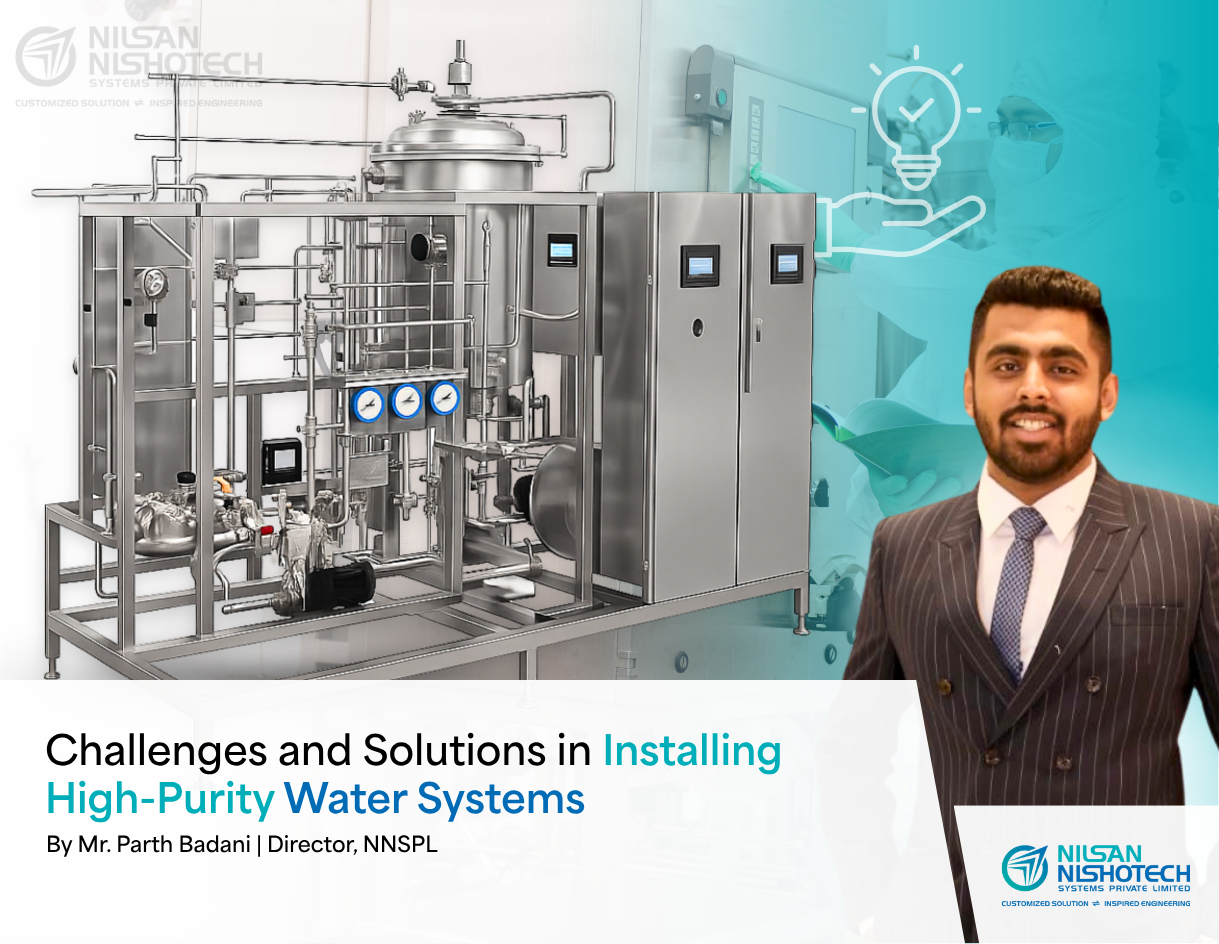-
-
W-199-E, MIDC Khairne, Thane Belapur Road, Navi Mumbai – 400705. India.
Challenges and Solutions in Installing High-Purity Water Systems

17 Nov 2025
Challenges and Solutions in Installing High-Purity Water Systems
Installing High-Purity Water Systems is critical for industries such as pharma, Biopharma, FMCG, and Electronics, where water quality directly affects product safety and performance. Companies like Nilsan Nishotech specialize in designing and implementing such advanced systems, ensuring that every drop meets the highest purity standards.
In this blog, we’ll discuss the most common challenges during installation and how to overcome them for a smooth and efficient setup.
Understanding High Purity Water Systems
1. Incorrect System Design
One of the biggest challenges is improper system design. Many installations fail because the water quality requirements are
not clearly defined during the planning stage.
Example: A system designed for general industrial use may not meet stringent Pharma or Biopharma standards like USP or EP.
Solution: Always start with a detailed analysis of your process water requirements. Collaborate with experienced professionals like Nilsan Nishotech, who understand the unique needs of different sectors and can design systems that comply with industry regulations.
2. Material Selection and Compatibility
Choosing the wrong materials can lead to corrosion, contamination, or system failure. For example, stainless steel may not always be suitable for certain high-resistivity water applications.
Solution:Select materials like SS 316L, PVDF, or PFA that maintain chemical compatibility and resist corrosion. Ensure all joints, fittings, and valves are sanitary-grade and meet GMP guidelines.
3. Improper Installation Practices
Even a well-designed system can underperform if installed incorrectly. Common issues include dead legs, improper slope in pipelines, or non-sanitary welds.
Solution:Follow ASME BPE standards for installation. Regular inspection, documentation, and validation must be done at every stage. Partnering with skilled installation teams ensures precision and compliance.
4. Microbial Contamination
Microbial growth in water systems can compromise the entire production process. Stagnant water, poor circulation, or improper sanitization are major contributors.
Solution:Maintain continuous water circulation and integrate systems like UV disinfection, heat sanitization, or ozone dosing. Regular microbial monitoring is essential to maintain water integrity.
5. Validation and Documentation Issues
Regulated industries like Pharma and Biopharma require strict documentation and validation before a system can be approved for use. Missing records or incomplete IQ/OQ/PQ can lead to costly delays.
Solution: Develop a comprehensive validation plan from the beginning. Work with experienced teams that can provide full documentation and ensure compliance with regulatory standards like FDA, GMP, and WHO.
Best Practices for Efficient Installation
- Plan early: Include system design in the project’s initial stage.
- Use certified materials: Always choose materials that comply with purity and regulatory standards.
- Regular testing: Perform periodic testing to confirm system performance.
- Training and awareness: Ensure operators are trained in system operation and maintenance.
Conclusion — The Formula for Lasting Success
Installing a High Purity Water System is a complex yet crucial process that determines the quality and reliability of your production line. Challenges like poor design, material issues, or microbial contamination can be avoided through proper planning, expert guidance, and validation.
With decades of experience in the Pharma, Biopharma, FMCG, and Electronics industries, Nilsan Nishotech ensures seamless installation and maintenance of high-purity water systems that meet the most stringent global standards.
When it comes to purity, precision, and performance — trust Nilsan Nishotech to deliver excellence every step of the way.
📩 For inquiries or collaboration opportunities:info@nilsan-nishotech.com

